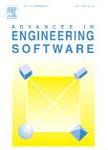版权所有:内蒙古大学图书馆 技术提供:维普资讯• 智图
内蒙古自治区呼和浩特市赛罕区大学西街235号 邮编: 010021

作者机构:SRM Inst Sci & Technol Dept Comp Sci & Engn Chennai Tamil Nadu India
出 版 物:《ADVANCES IN ENGINEERING SOFTWARE》 (工程软件进展)
年 卷 期:2022年第172卷第0期
核心收录:
学科分类:08[工学] 0835[工学-软件工程] 0812[工学-计算机科学与技术(可授工学、理学学位)]
主 题:Deep learning Convolutional neural networks Machine learning
摘 要:Our project falls under the domain of Natural Language Processing and Machine Learning. With the advent of digitization, it became necessary to preserve data produced by humans. Voice and text are how we communicate. Visual impairment can be defined as partial or complete loss of vision. The primary goal of this project is to extract text from braille text images, so as to store it in a drive for later use. Although there are various ways to implement this, we ll use Deep Learning. Visually impaired people face numerous difficulties like interacting with the surroundings, navigation, etc. Different machine learning models like CNN, etc. have been used to solve this problem but usually have a high cost of detection in terms of computational time and hence they are not suitable for real-time applications [1]. To meet the project objective, we studied about Convolutional Neural Networks. The plan for picking this field is that it empowers machines to see the world as people do, see it likewise and even utilize the information for a huge number of undertakings like Image Recognition, Image Analysis and Classification, Media Recreation, Recommendation Systems, and so on [2]. This paper proposes a customized CNN model based on Braille Character dataset which has 26 different classes of all alphabets. This model uses a feature extractor that recognizes relevant features corresponding to each image, and then uses a classifier network to classify images into a set of classes. This model will take an image input, then pass those individual images to our classifier and then detect the braille language characters present in that image and give a translated English text and audio output. The final accuracy we obtained was 0.9615. These results show the model s robustness against factors like low light illumination.